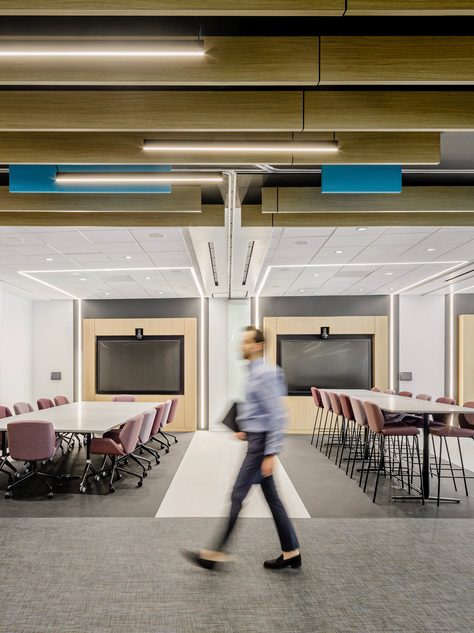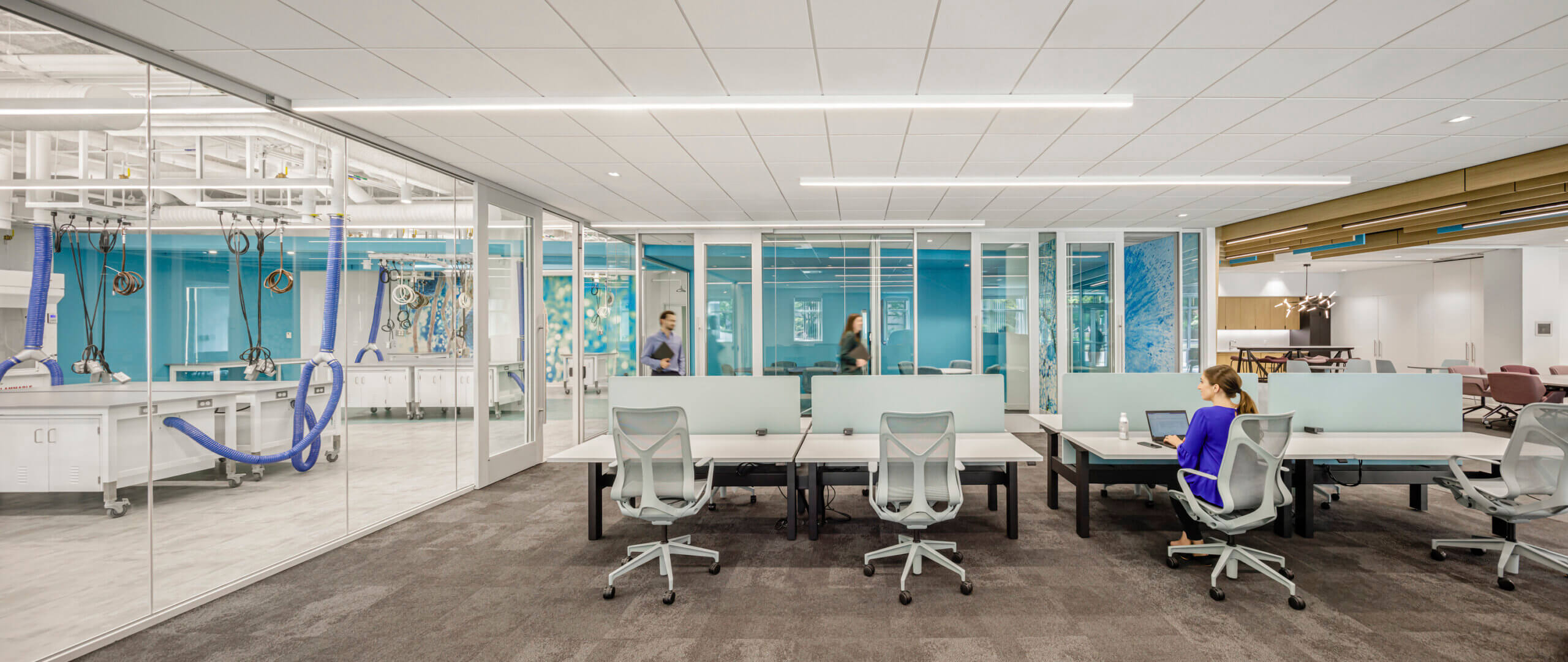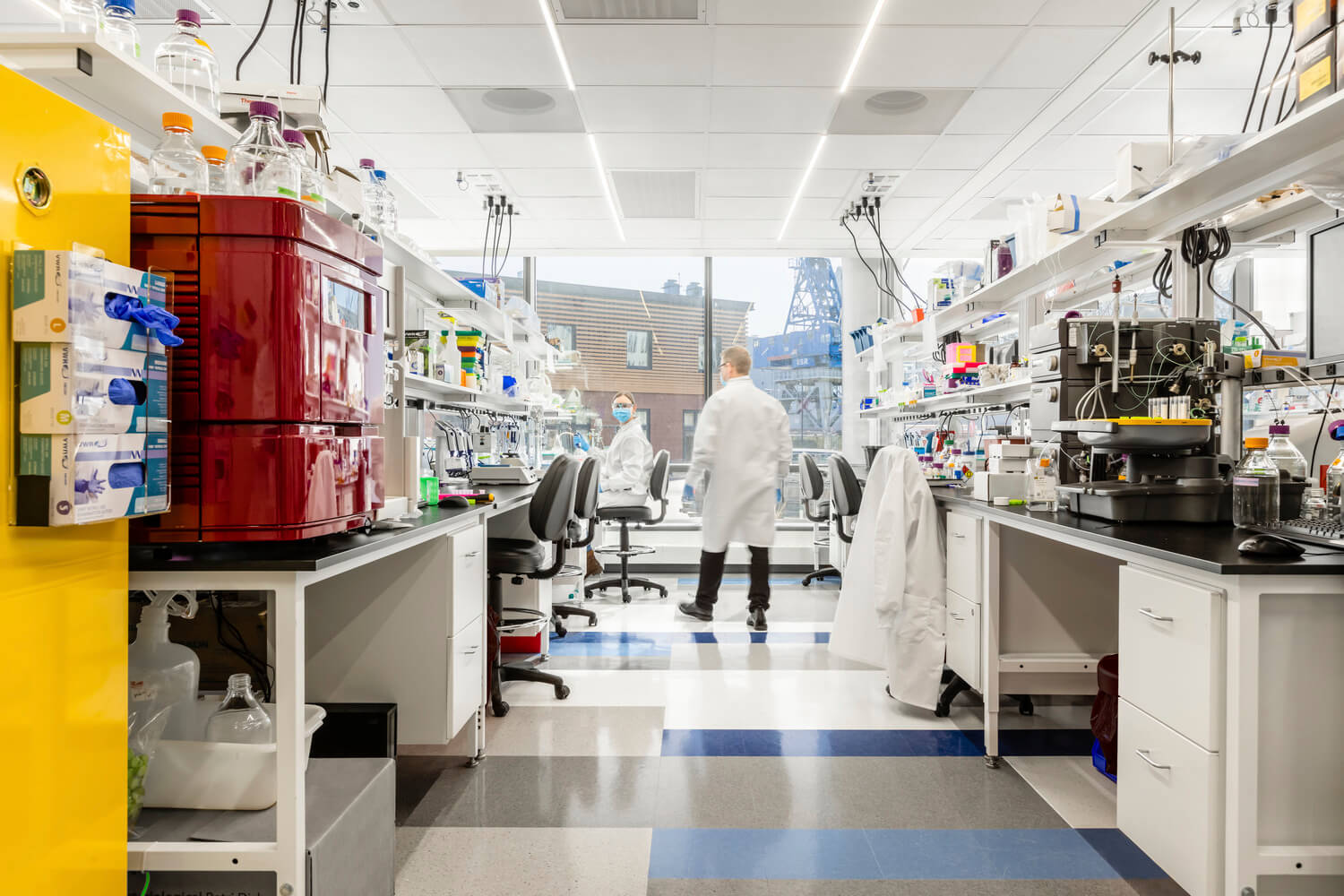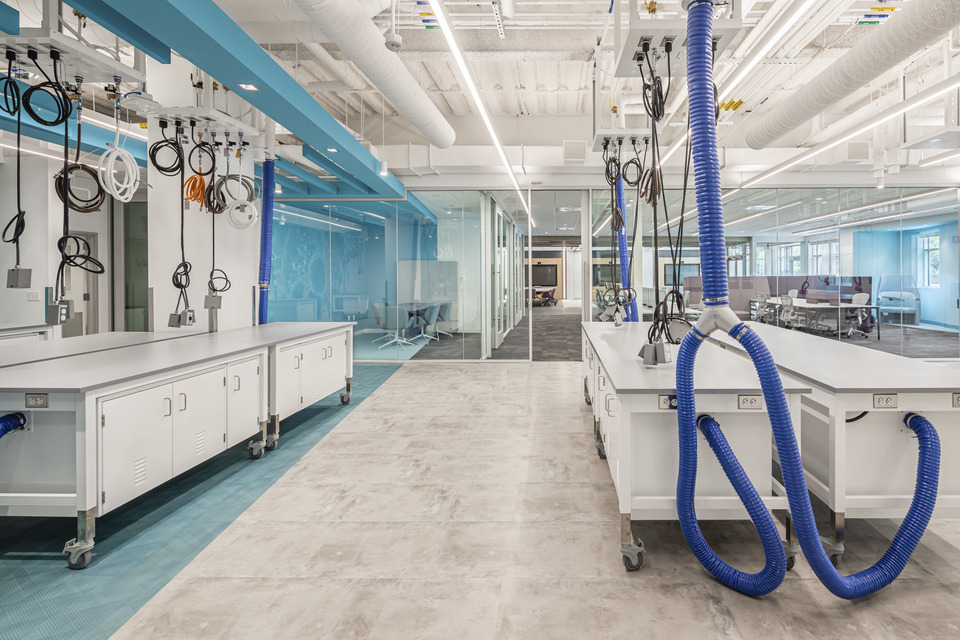
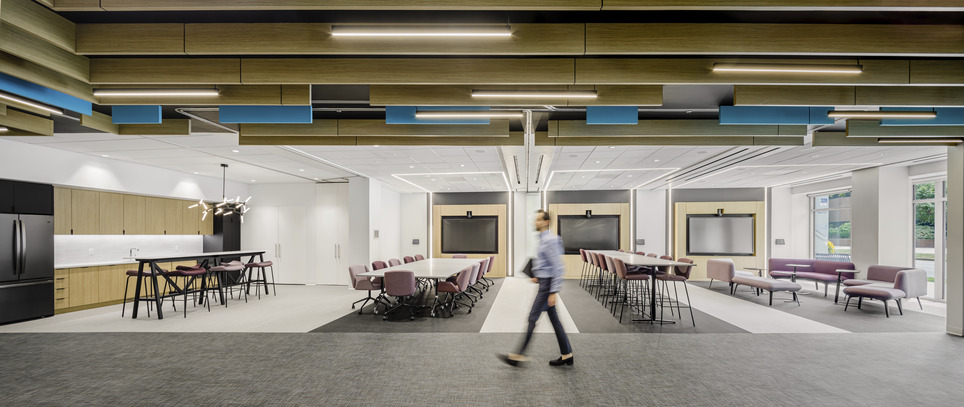
The facility is unlike any other Waters spaces across the globe.
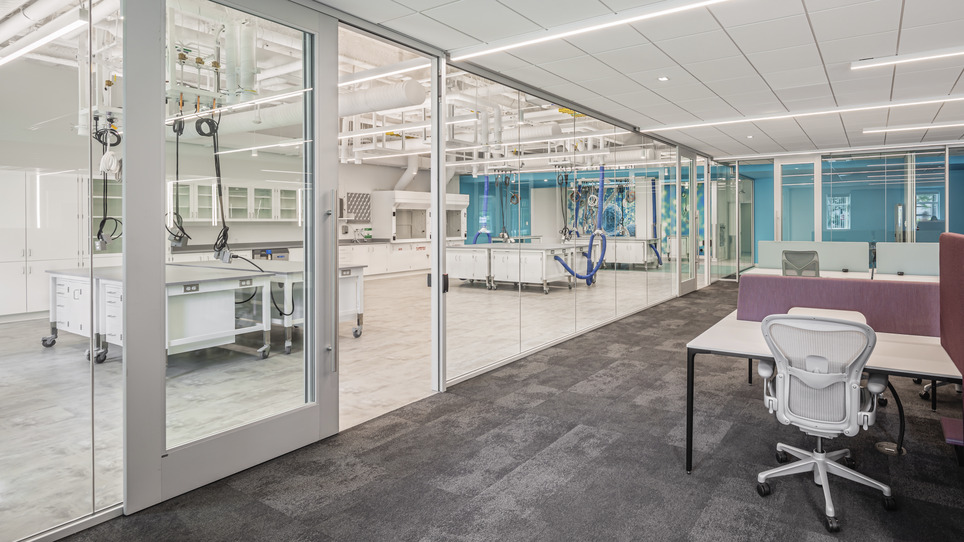
Demonstration areas showcase the company’s mass spectrometry systems and lab informatics software. Fully functional labs connect to open offices, research spaces, and a café and event area. In just 9,000 square feet of space, Waters can connect with current and potential clients, push forward its research, and attract scientific talent.
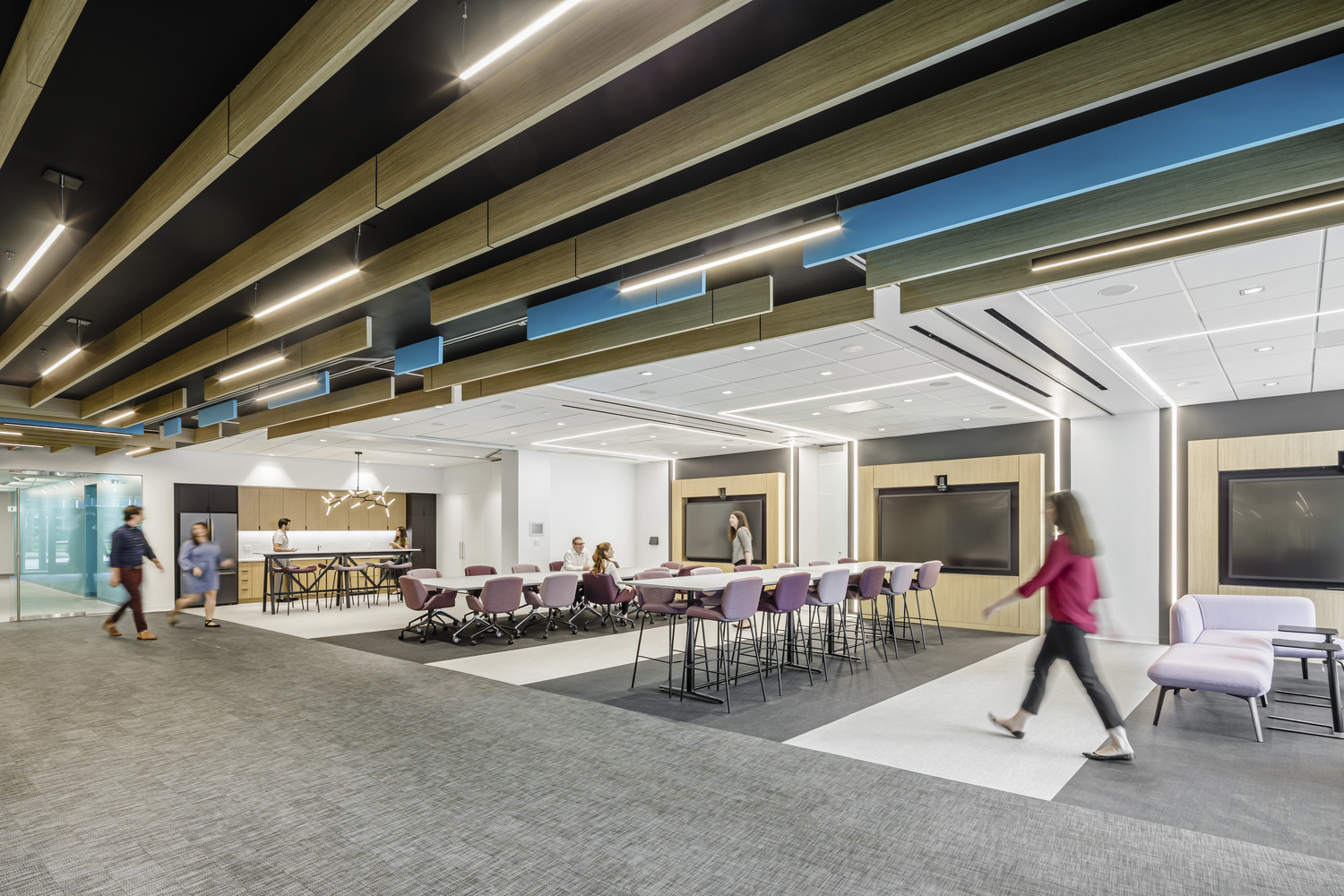
Small but agile, the space fosters hands-on teamwork to solve large-scale problems.
Waters have teamed with Boston University to develop improved influenza vaccines. The lab supports these kinds of complex, multi-use endeavors, which include building analytical and software solutions that can be applied by third parties.
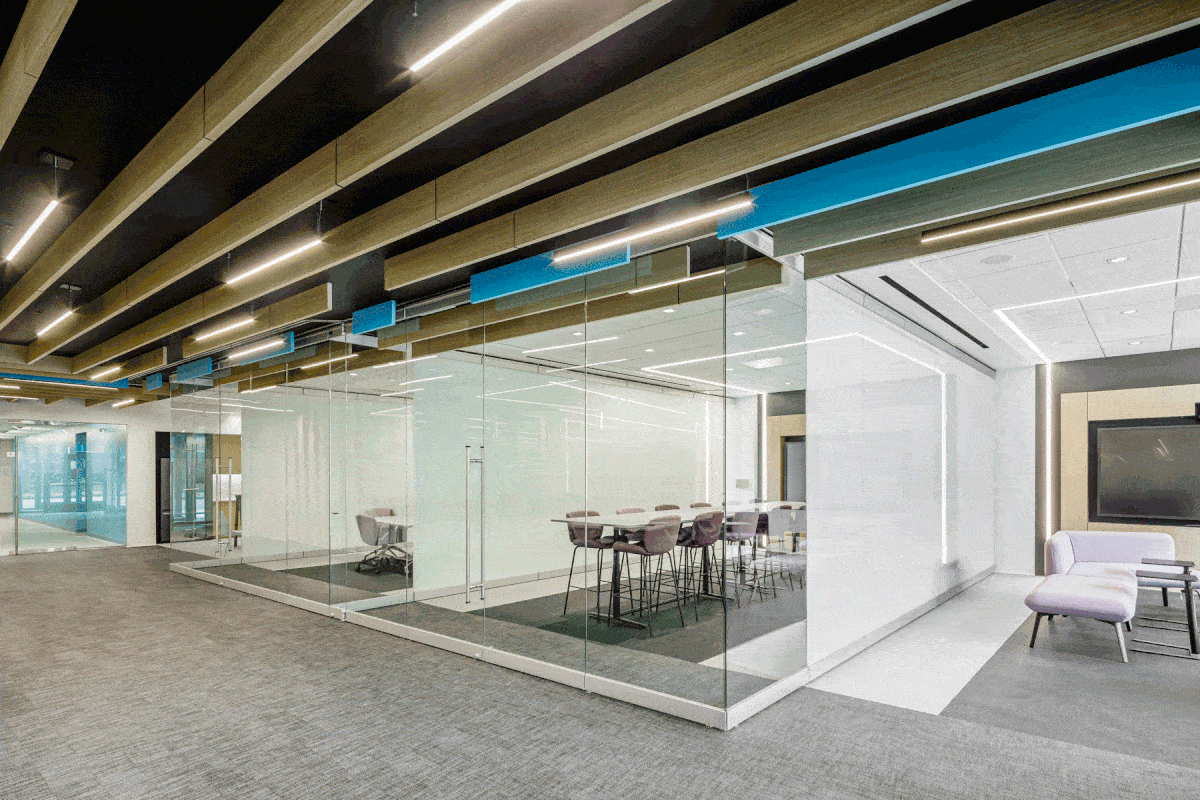
At first glance, the existing floorplate appeared too small for the Waters program. To resolve this, SMMA designed a complex sliding glass wall system that maximizes the space. Users can open and close the panels to reconfigure for different tasks and accommodate large forums or events.
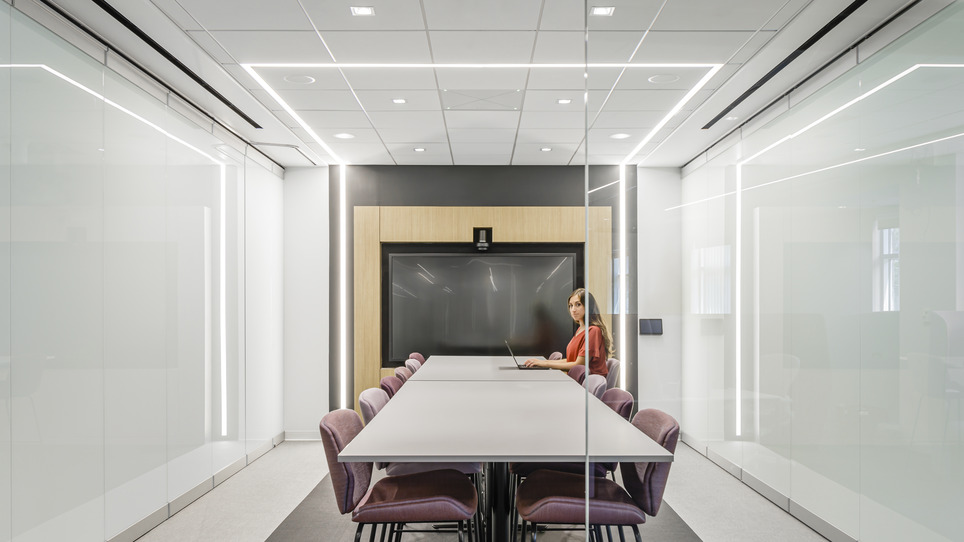
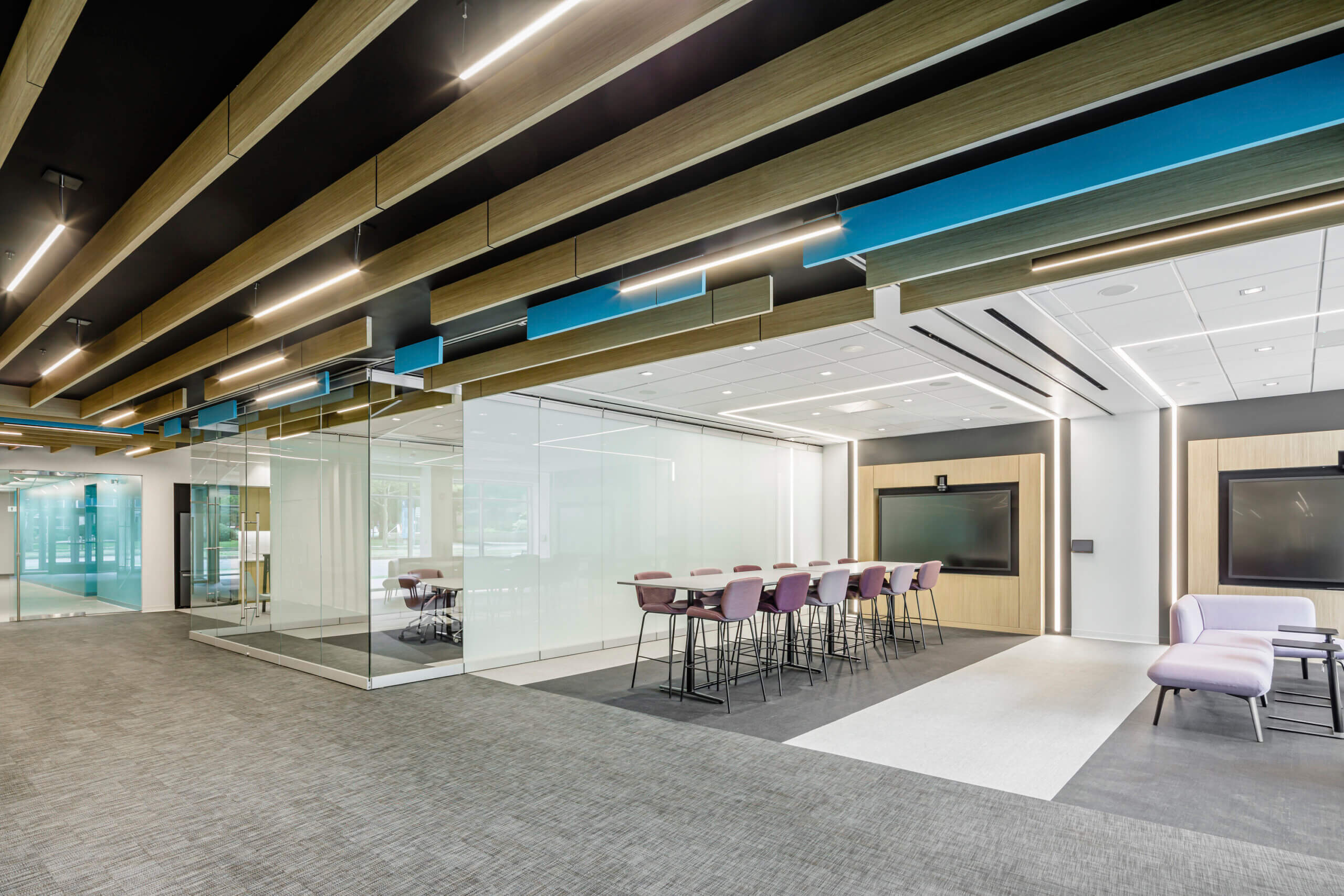
For a deeper dive on this project’s challenges—including the fiendish coordination required for the moveable glass—read our piece in IIDA’s “Designer Monologues” blog:

The project shows how “workspace” has come to mean more than traditional office space.
The original space lacked the infrastructure and systems to support a flexible workplace. SMMA’s engineers, architects, and interior designers worked closely to plan and coordinate a versatile design in which the new MEP systems aligned with those of the overall building—a priority for developers BioMed Realty.
This “separate but connected” approach includes redesigned HVAC, electrical, and plumbing systems. Innovative features include a point exhaust and flex duct in the exposed ceiling for better heat extraction and quick disconnects and flexible hoses for gases.
